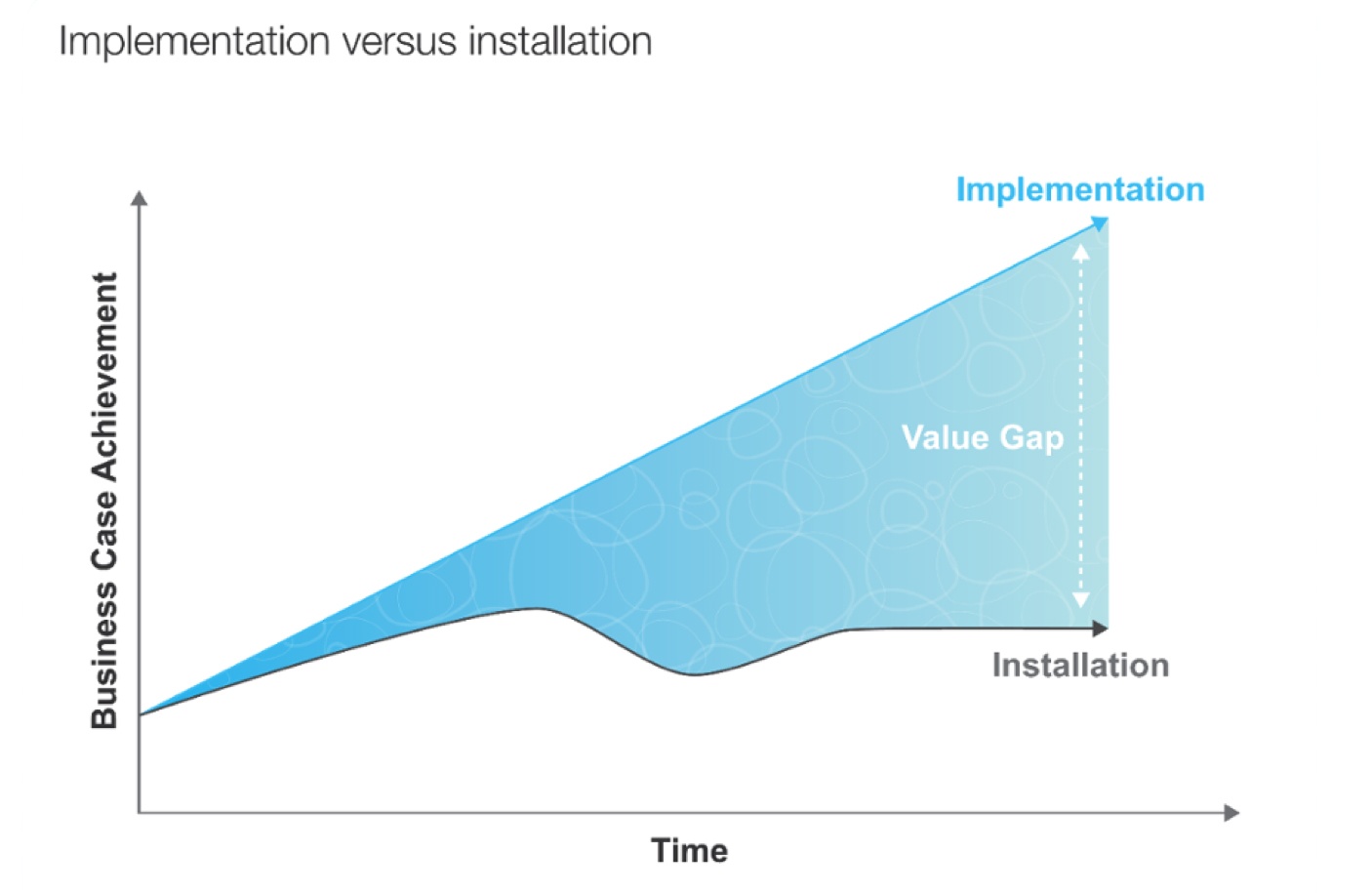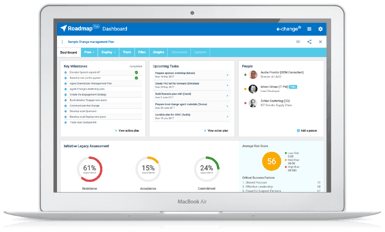The past year has been the most challenging in living memory, from both a personal and business perspective. More or less across the board.
Prior to the global pandemic we were increasingly working with clients who were heavily focused on creating a definition for Agile Change Management and developing Agile Change Management capability. And at that point Agile was as much an ambition as an on-the ground reality for many.
Fast forward just a couple of months and an Agile approach is no longer just a wishlist item. It has become a necessity for Change teams that are being required to move faster than ever, pivot at times daily and respond to increasingly complex situations - in fact as we noted in our infographic at the time Agile is turning organizational Change Management on its head.
But Agile is only one part of the equation and is even more inextricably linked with Digital Transformation post COVID. As McKinsey recently observed the COVID-19 recovery will be digital as levels of organization remote working skyrocket by levels of up to 75%.So, what is Agile Change Management? What benefits can you expect from it and what does it really mean on the ground. For your Change Management processes, your infrastructure and, most importantly, for your people.
And what role does digital have to play in helping you deliver more Agile Change Management in world impacted by COVID-19?
The Origins of Agile and What is Means for Change Management
So where to start? It seems like a good place would be to create some form of a definition and layout our understanding of the genesis of not only Agile Change Management – but of Agile as a concept itself. Depending on your perspective you go can back and trace the origins of Agile in the product and process improvement work of Bell Labs and Deming in the 1930’s, through Kaizen and Lean manufacturing techniques of the 60’s and 70’s right up to the present day.

But for the purposes of our analysis, the development of Agile methodology in software development in the late 1990’s and onward is key to understanding the unprecedented impact that Agile is having on organizations – and Change Management practitioners – today. The Agile approach to software development was a direct response to the complex, cumbersome and slow traditional approach to delivering software and IT projects. In stark contrast, it is flexible, iterative, allows rapid deployment of changes and - perhaps most importantly - it gets software in the hands of end users much more quickly than before.
Fast forward to today – and the unprecedented success of Agile in software teams has led to its principles spreading like wildfire through teams and across functions in organizations and making it one of the hottest topics in boardrooms across the globe. Consider some of the following pre-COVID-19 stats:
- 94% of organizations surveyed by Deloitte see “agility and collaboration” as critical to their organizational success (although only 6% see themselves as “highly agile today”)
- McKinsey also found that while less than 10% of organizations have completed an agility transformation, a whopping 75% see organizational agility at either a top or top three priority for them
And COVID has only served to pull Agile right up to the top of the business agenda with the unprecedented level of disruption demanding agile change leadership - and that business units take an Agile approach to planning, delivering and evaluating their activities. And if the business is using this type of approach, the challenge for Change Management practitioners is to adopt a completely new and revolutionary approach to change implementation that mirrors and support this.
_________________________________________________________
 |
CHANGE CERTIFICATION PROGRAM Do you need the tools and skills to be more Agile in delivering change? Then our 3 day virtual Change Management Certification may be just right for you. |
So where does this leave Change Management in all of this?
Change Management has always been an enabling capability allowing organisations to successful transform and extract investment value through people.
For us it has always been about closing the change Value Gap - the difference between successful installation and implementation in your change projects. Installation is about putting the hard stuff in – the structures, the processes and software. But real implementation is about getting people to commit to new ways of working and changing behavior. And closing the Value Gap.

Source: Changefirst Approach 2018 - Reducing the Value Gap
None of this has changed changes in an Agile context – in fact, if anything, with the huge disruption caused by COVID-19, and the accelerating impact it is having on what was an already rapid trend to digital transformation new technology. this is more important than ever.
However, more traditional change management approaches to Change management Management need to be completely reconsidered with the advent of Agile.in the current highly disrupted business environment Typically, these approaches have been centrist, with change expertise held at the center – most likely only within HR and OD functions - and resource heavy models that rely largely on a small group of change experts being supplemented by consultancy support as and when required. To date they have fitted with previous organizational models with varying degrees of success – in fact the McKinsey survey referenced above recorded a decline in employee commitment from 68% to 55% in the same time period.
However, pre-COVID we believed strongly that new operating models like Agile meant we needed to consider new change Change management Management models. In a post COVID world – with social distancing, increasingly remote teams and a complete inability to consistently get Change Management “boots on the ground – the additional “rider” is that you also need to be able to deliver this new model digitally. In order to respond to a raft of new and different challenges and continue to be remain relevant and successful in our your Change Management efforts.
Implications for Change Management – matching your approach to Agile digitally
For us the change in approach that is required has its’ roots Agile itself.
In the diagram below are 4 key implications for Change Management that match – and deliver against - the 4 central drivers of Agile we see on a daily basis.

This is an excerpt from our infographic - How Agile is turning Change Management on its head. You can download a copy of the infographic here.
Agile Change Management is now longer a nice to have
So as Change Management teams begin to emerge from the early phase of their responses to COVID-19 the focus has to be on solutions that help them to deliver Change Management in a more Agile way going forward. And these solutions have to have the capability to deliver virtually and:
- mirror the Agile approach being taken by the rest of the organization
- get started quickly, virtually and collaboratively on change projects
- scales easily across teams, functions and geos
- gives them the just-in-time data they need to analyze, review and pivot when needed
- leverages the power of digital and improves their chances of success on projects
If you would like your team to operate in a more Agile way talk to us about our Roadmap Pro our digital Change Management platform.





Leave a comment